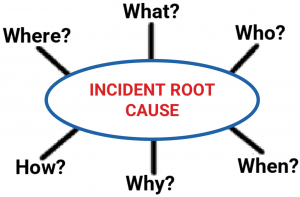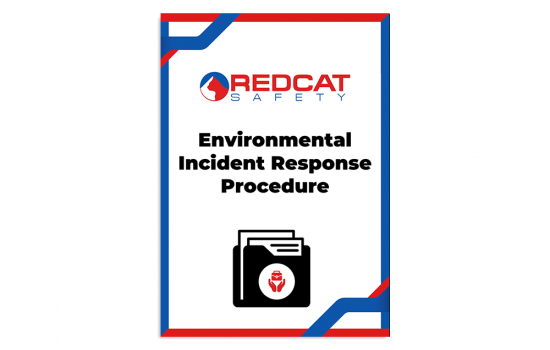What is an Environmental Incident?
An environmental incident refers to an event or occurrence that results in actual or potential harm or negative impacts on the environment.
It involves the release, spill, discharge, or improper handling of substances or activities that pose risks to ecosystems, natural resources, human health, or the overall environmental quality.
Environmental incidents can happen in various contexts, including industrial facilities, transportation, construction sites, agricultural operations and other human activities that interact with the environment.
Below are some examples of environmental incidents:
Chemical Spills
Accidental releases or spills of hazardous chemicals, pollutants, or contaminants into the environment, such as water bodies, soil, or the atmosphere.
Oil Spills
Large-scale or localized spills of oil or petroleum products that can contaminate water bodies, shorelines and coastal areas, leading to detrimental effects on marine life, habitats and ecosystems.
Air Pollution Events
Significant emissions of pollutants into the air that result in poor air quality, smog or health hazards to humans, plants and animals.
Water Contamination
Contamination of water sources, such as rivers, lakes, or groundwater, due to the discharge of untreated or improperly treated wastewater, agricultural runoff, or industrial effluents.
Habitat Destruction
Destruction, alteration, or degradation of natural habitats, including deforestation, wetland destruction, or land clearing that can lead to loss of biodiversity and disruption of ecosystems.
Soil Contamination
Contamination of soil with hazardous substances, such as heavy metals, pesticides, or industrial waste, which can harm plants, animals, and humans through direct exposure or by affecting the food chain.
Ecological Disruptions
Introductions of invasive species, disturbances to sensitive ecosystems, or disruptions of natural processes, leading to imbalances in biodiversity, ecosystem functioning, or the loss of native species.
Accidental Releases
Accidental releases of pollutants, hazardous materials, or waste from industrial processes, storage facilities, or transportation incidents, which can result in immediate or long-term environmental impacts.
Industrial Accidents
Significant incidents, accidents, or malfunctions in industrial facilities that result in environmental harm, such as explosions, fires, or leaks of toxic substances.
Environmental incidents can have severe consequences on ecosystems, human health and socio-economic systems. They often require immediate response measures, cleanup actions, and mitigation efforts to minimize the impacts and restore the affected environment.
What is an Environmental Incident Response Procedure?

An environmental incident response procedure is a structured plan or set of guidelines that outlines the necessary actions and steps to be taken when an environmental incident occurs.
It provides a systematic approach to effectively and efficiently respond to incidents that have the potential to cause harm to the environment, human health, or natural resources.
The procedure aims to mitigate the impacts of the incident, minimize further damage, and facilitate the restoration of the affected environment.
Environmental incident response procedures are essential for organizations to effectively respond to incidents, minimize environmental impacts and demonstrate a commitment to environmental stewardship.
Regular training, drills and exercises should be conducted to familiarize personnel with the procedure and ensure their readiness to respond in real-life situations.
Contents of this Environmental Incident Response Procedure
- Approval.
- Purpose.
- Scope.
- Terms and Definitions.
- Roles and Responsibilities.
- Procedures.
- Environmental Emergency Incident Sequence Actions.
- Personal Protection Guidelines for an Emergency or Incident Clean-up.
- Hazardous Chemical Spill.
- Battery Acid Spills.
- Fire Response.
- Discovery by a Single Person.
- Discovery of a Fire by Two Persons.
- Basic Rules and Precautions When Fighting Fires.
- Explosive Fires.
- Gas Leaks.
- Floods.
- Poor Air Quality.
- Working in the Heat and UV Radiation.
- Discovery of Indigenous Relics.
- Threatened Species.
- Related Procedures, Forms and Documents.
- Review Criteria.
- Record Management.
Why Become a Member of Redcat Safety and Download this Environmental Incident Response Procedure?
This environmental incident response procedure can assist you to respond to environmental incidents, minimize environmental impacts and demonstrate a commitment to environmental compliance.
After downloading this environmental incident response procedure you will be able to:
- Very easily edit and customize the template to create your own environmental incident response procedure.
- Apply your own style, format and brand to the procedure.
- Use it in any industry or sector regardless of size or type of organization.
Availability and Use of this Environmental Incident Response Procedure
- This procedure template is accessible to you right now by clicking the ‘Become a Member Now’ button.
- The procedure will be delivered to you in fully editable Microsoft Word format for immediate and full use in your business.
- There are no membership auto-renewals, contracts or ongoing costs.

If you can find HSEQ resources that are of better value than what your Redcat Safety Membership offers, we will REFUND YOU double the cost of your membership.

